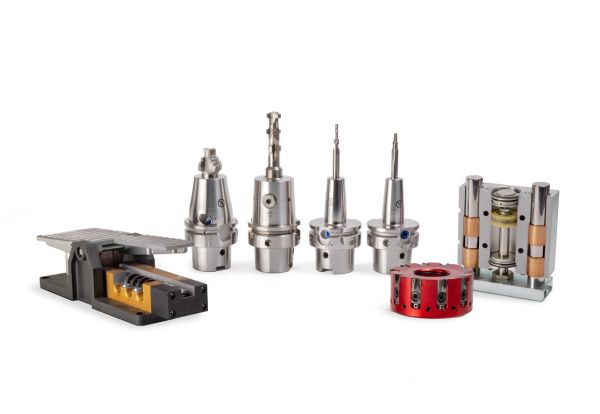Aluminium expertise for pneumatics
MAPAL harnesses its machining expertise from the mass production of aluminium components in the automotive industry for the production of critical components for pneumatics. Economical solutions for high quantities are needed in both industries. Cycle times and quality are key.
The story of the Aalen tool manufacturer MAPAL is strongly linked to fluid power. The company’s fine boring tools were already deployed in this area 50 years ago. Today, the fluid power market segment at MAPAL includes the areas hydraulics, pneumatics and process engineering. The material employed has a significant influence on the machining solution. Because liquids are under high pressure in hydraulics, casting and steel are used for the most part. Lightweight material like aluminium can be used as less pressure is needed for pneumatics.
Forces and movement are produced, controlled and efficiently transferred in pneumatics via air and gas. This takes place in valves and cylinders for the most part. Areas of application include machine engineering, logistics and medical technology.
MAPAL has identified two critical components in a housing for pneumatic valves and a pneumatic cylinder and has designed economic and high-precision machining processes for them. Due to their quantities of several million per year and the highest demands on process reliability, precision, and quality, both components are the perfect match for the tool manufacturer, which can draw on its aluminium machining expertise and product range for this purpose. The components are made of aluminium material with a small amount of silicon, which places high demands on the machining solution with respect to chip formation and removal. Particular attention is paid to avoiding burr formation or scoring: burrs in bores can have a significant effect on a valve’s functionality and even cause it to fail.
Smart tool combinations for pneumatic valve housings
The cost driver in the production of valve housings is the middle bore for the spool – the spool bore – where tight surface, form and position tolerances must be precisely adhered to. The spool moves in this bore to control the airflow and in end effect move the pneumatic cylinder. MAPAL concentrates on providing customers with the most economical solution for their machining by means of tool combinations.
Solid carbide tools with special multi-cut technology and chip grooves for ideal chip control are used for stepped bores. Most tools are equipped with PCD blades due to the quantities and requirements. For contour machining, MAPAL combines PCD boring tools with milling applications. The tool begins with boring here and follows up with circular milling. Such combination tools mean fewer tools are required and machining and non-productive times are reduced. Multistage PCD combination tools also ensure the highest degree of concentricity for contour machining.
The spool bore has multiple control edges, which are machined by a PCD circular milling cutter. Its cutting edges are precisely adapted to the customer’s part. The tool mills out the contours completely in one machining step, which saves a substantial amount of processing time. The mechatronic tool system TOOLTRONIC is a high-tech alternative to the conventional machining processes of the spool bore with PCD circular milling cutters. Thanks to its flexibility and contour-free programmability, the number of tools required is greatly reduced. This allows part variations and changes to parts to be implemented easily and without the need to procure new tools.
For the second critical component, the pneumatic cylinder, an automatically produced housing is also a focal point. The challenges here are posed by the fluctuating hardness properties of the continuous casting material and high machining qualities. While the characteristic features of both critical components may differ, the tasks involved in machining them are very similar. Of course, MAPAL also banks on smart machining here. This includes, amongst other things, a PCD combination tool for the complete machining of the bearing seat in the piston bore with minimised scoring by means of boring, circular milling and chamfering.






